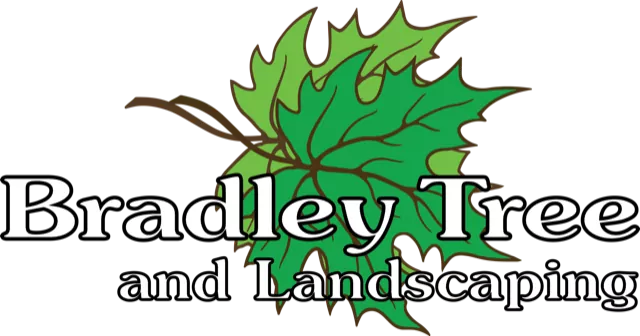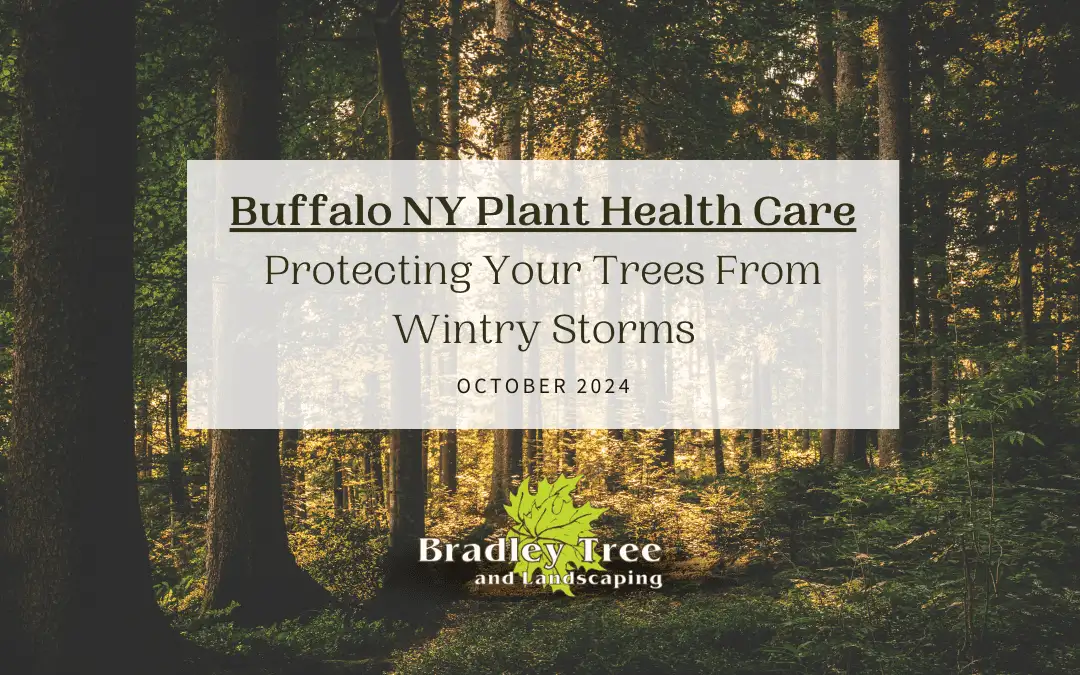Fall and early winter in Buffalo bring a unique mix of heavy winds, rain, and lake-effect snow that can put even the sturdiest trees to the test. For homeowners in Western New York, taking early steps to protect trees through professional plant health care isn’t just about avoiding costly storm damage—it’s about keeping the landscape beautiful and healthy for years to come. Bradley Tree and Landscaping is proud to help educate our community on tree care and provide the expert services needed to weather these challenges.
Understanding Buffalo’s Fall and Winter Storms
What Makes Buffalo’s Weather Unique in Plant Health Care?
Buffalo’s location along the coast of Lake Erie makes it susceptible to intense weather events. In the fall, the combination of heavy rain, strong winds, and lake-effect snow can literally create the perfect storm. That’s one of the reasons why tree risk management and plant health care can be so important! These powerful forces are more than capable of snapping branches, they can topple trees, and cause serious landscape damage. That’s why proactive plant health care is key to keeping your trees and your property safe.
Common Types of Storm Damage to Trees
The high winds and sudden temperature shifts typical of Buffalo’s fall and early winter storms can lead to a range of problems for trees. You might notice broken branches littering the yard, trunks splitting under pressure, or even entire trees uprooted. Not only is this dangerous, but it can also be a major headache for homeowners who have to deal with cleanup and potential property damage.
Assessing Your Trees Before the Storm Hits
Signs That Your Tree Might Be Vulnerable
Assessing your trees before a storm arrives is crucial in preventing damage. Signs that your tree may be vulnerable include dead or brittle branches, visible cracks in the trunk, or a leaning tree that appears unstable. Trees with fungal growth or noticeable root damage may also be more susceptible to storm-related issues.
Tree Health Care Checks for Homeowners
Before the stormy weather rolls in, a simple health check can help you determine if your trees are ready. Start by looking for dead or broken branches—these are often the first to break in high winds. Gently inspect the base of the trunk for any soft spots or signs of root decay. If you notice anything concerning, it might be time to call in a professional arborist to evaluate your tree’s condition.
Preparing Your Trees for Fall and Winter Weather
Tree Pruning Helps Remove Weak and At-Risk Branches
One of the best ways to protect your trees is by pruning weak or dead branches. Pruning helps reduce wind resistance, minimizing the risk of branches breaking off and causing damage. While DIY pruning can be helpful, professional pruning services ensure your trees are trimmed correctly and safely, with the proper tools and techniques to handle even the most delicate branches.
Soil Management for Stability
Managing the soil around the base of your trees is another effective way to prepare for fall and winter weather. Healthy soil leads to a healthy tree, which helps insulate the roots and maintain soil moisture. These are crucial for stability when temperatures drop! Healthy roots anchor trees in place, making them less likely to be uprooted during storms.
Bracing and Cabling Techniques
For mature or structurally weak trees, bracing and cabling can provide the added support they need to endure high winds. These techniques involve installing cables or braces to reinforce the tree’s structure and keep it from splitting under pressure. This is a job best left to certified arborists, who have the knowledge and tools to secure your trees safely.
Proactive Measures for Tree Protection in Buffalo and WNY
The Role of Proper Tree Placement
Strategic tree placement is a critical aspect of minimizing storm damage. The right tree in the right place can thrive for decades to come! When planting trees, consider factors like spacing and proximity to structures. Proper spacing allows trees to grow strong root systems, reducing competition and enhancing their stability during adverse weather conditions.
What to Do to Minimize Tree Damage
Monitoring Your Trees from a Safe Distance
Monitor your trees from a safe distance indoors. The poor weather is not the right time to inspect potential damage! Wait for the storm to blow over. Look for signs of immediate danger, such as leaning trees or hanging branches, and make a note to address these issues as soon as it’s safe to do so.
Assessing and Managing Tree Damage
Identifying Common Types of Storm Damage
Once the storm has passed, it’s time to assess any damage. Look for broken or hanging branches, exposed roots, and cracks in the trunk. These types of damage can weaken a tree and pose a risk to your property if not addressed promptly by ISA-Certified arborists.
What You Can Handle vs. When to Call a Professional
For minor damage, like small broken branches, homeowners may be able to handle the cleanup themselves. However, if you notice significant structural damage, such as a split trunk or a partially uprooted tree, it’s important to call in professional help. Bradley Tree and Landscaping offers prompt and professional tree services throughout Buffalo and WNY—we’re here to help when you need us most.
Why Hire a Professional Tree Service in Buffalo?
The Benefits of Local, ISA-Certified Arborists
Hiring a local, ISA-certified arborist ensures that your trees receive the best care possible. ISA certification means that your arborist has the training and expertise to handle tree care safely and effectively. Plus, local experts are familiar with Buffalo’s unique climate and the specific challenges it poses for tree health.
Keeping Buffalo Trees Strong Through Every Season
Protecting your trees from fall and early winter storms is all about being proactive. By assessing your trees, performing regular maintenance, and seeking professional help when needed, you can minimize the risk of damage and keep your landscape thriving. Bradley Trees is always here to lend a hand—whether you need a consultation, emergency services, or just some friendly advice, we’re proud to help keep Buffalo’s trees strong and beautiful through every season.
Don’t forget to stay up to date with your favorite Buffalo arborists by following us on our blog and on Facebook, Instagram, and YouTube! Reach out today with a phone call or by using our online contact form.

